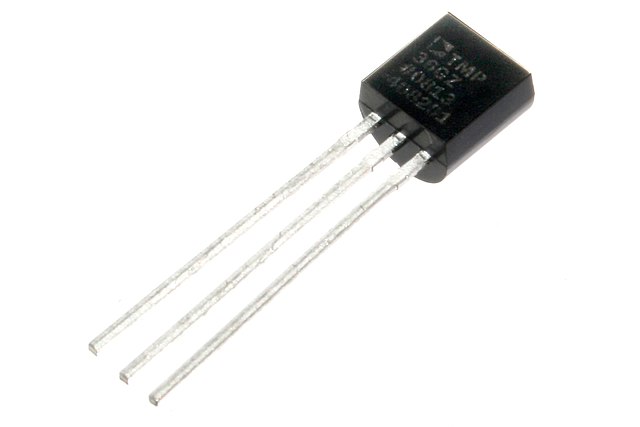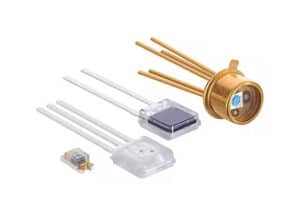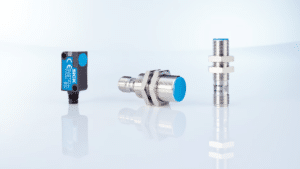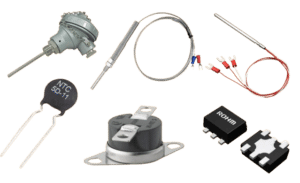In an age dominated by technology, Sensors and Measurement systems have become essential to the operation of countless devices and systems. These small yet powerful components are the unsung heroes of our daily lives, playing pivotal roles in everything from smartphones to advanced industrial machinery. Sensors serve as the bridge between the physical world and the digital realm, providing vital data that enables devices to intelligently interact with their surroundings.
The evolution of sensors has been remarkable, paralleling rapid technological advancements. Today, they are more than just simple input devices; they are the “eyes and ears” of modern electronics, equipped to detect environmental changes with precision and reliability. Whether monitoring temperature, pressure, light, motion, or touch, sensors provide critical data that powers decision-making processes in both everyday and complex applications.
In this guide, we explore the diverse world of sensors, covering key types of sensors, such as Types of Temperature Sensors, Types of Magnetic Sensors, Types of Optical Sensors, and more. Each sensor type comes with unique working principles, advantages, limitations, and specific use cases. Our journey through the realm of sensors will underscore their importance and illuminate the sophistication and versatility these components bring to modern technology.
As we delve into this exploration, it’s essential to appreciate the intricate ways sensors have shaped—and continue to shape—the world around us. From enhancing personal convenience to driving industrial efficiency, the impact of sensors is both profound and far-reaching. Join us as we uncover the types of sensors that, silently yet significantly, are transforming our interactions with technology and the world.
What are Sensors?
Sensors are fundamental components in the field of electronics and technology, serving as the cornerstone for a myriad of applications. At their core, sensors are devices designed to detect and respond to various types of inputs from the physical environment. These inputs could be anything from light, heat, motion, moisture, pressure, or any other environmental phenomenon. The primary function of a sensor is to convert these physical inputs into electrical signals, which can be measured, analyzed, and used to trigger a response or action.
The essence of a sensor lies in its ability to perceive changes in its surroundings. This ability makes them indispensable in creating systems that are interactive and responsive. For example, a temperature sensor in a thermostat detects changes in room temperature and triggers heating or cooling systems to maintain a desired temperature range. Similarly, motion sensors in security systems detect movement and alert homeowners or security personnel.
Sensors come in various forms and types, each designed to detect specific types of inputs. They range from simple, straightforward designs like thermistors, which measure temperature, to complex, multi-component systems like accelerometers in smartphones, which detect and measure changes in motion and orientation.
The sophistication of modern sensors has grown significantly with advancements in technology. Today’s sensors are more accurate, reliable, and faster in their responsiveness. Moreover, the integration of sensors with digital technologies, such as IoT (Internet of Things), has expanded their capabilities, allowing for more intelligent, connected, and adaptive systems. This integration has led to innovative applications in smart homes, automotive technology, environmental monitoring, healthcare, and many other fields.
In the subsequent sections, we’ll explore different types of sensors—temperature sensors, pressure sensors, motion sensors, light sensors, and touch sensors—delving into how each type works, their advantages and disadvantages, their characteristics, and their varied use cases. This exploration will provide a comprehensive understanding of how these different types of sensors operate and their pivotal role in advancing technology and improving our daily lives.
Types of Sensors 1: Temperature Sensors
Working Principles of Temperature Sensors
Temperature sensors are designed to measure the amount of heat energy in a given source, translating the data into a form understandable by the system or user. These sensors operate based on various principles, including electrical resistance changes in thermistors, voltage changes in thermocouples, and the unique properties of semiconductor materials in IC (Integrated Circuit) temperature sensors. A thermistor, for example, changes its electrical resistance with temperature variations, whereas a thermocouple generates a voltage proportional to the temperature difference between two different metals.

Advantages and Disadvantages of Temperature Sensors
One of the primary advantages of temperature sensors is their accuracy and sensitivity to even minute temperature changes. They are also compact, making them ideal for integration into various devices. Additionally, certain types, like IC temperature sensors, offer digital outputs that can be easily interfaced with microcontrollers and computers. However, disadvantages include the fact that some types, like thermocouples, require calibration for precise measurements, and others, like thermistors, have a non-linear response which can complicate the interpretation of their readings.
Characteristics of Temperature Sensors
Temperature sensors are characterized by their range, accuracy, response time, and stability. Thermocouples can measure a wide range of temperatures, from very cold to extremely hot, making them suitable for industrial applications. Thermistors are highly accurate for small ranges and are widely used in consumer electronics. IC sensors provide digital outputs and are known for their precision and ease of use in digital systems.
Use Cases for Temperature Sensors
These types of sensors are extensively used in household appliances like ovens, refrigerators, and HVAC (Heating, Ventilation, and Air Conditioning) systems to monitor and control temperature. In the industrial sector, they are crucial in processes that require precise temperature control, such as in chemical production and metal fabrication. In the automotive industry, they monitor engine and cabin temperatures to ensure optimal performance and safety. Additionally, temperature sensors play a vital role in healthcare, for instance, in incubators and to monitor patient body temperatures.
In the next section, we will explore pressure sensors, another essential type of sensor, discussing their working principles, advantages, disadvantages, characteristics, and use cases.
Types of Sensors 2: Pressure Sensors
Working Principles of Pressure Sensors
Pressure sensors are designed to measure the force exerted by a fluid (liquid or gas) on a surface. They function by converting the physical pressure exerted onto them into an electrical signal. One common type of pressure sensor, the piezoelectric sensor, generates a voltage when a mechanical force is applied. Another type, the strain gauge pressure sensor, changes its electrical resistance in response to the pressure-induced deformation. Capacitive pressure sensors measure changes in electrical capacitance caused by the movement of a diaphragm in response to pressure changes.

Advantages and Disadvantages of Pressure Sensors
Pressure sensors offer a range of advantages, including high sensitivity, reliability, and a wide measurement range. They can be designed to measure pressure with high precision, even in extreme conditions. However, some types of pressure sensors, like piezoelectric sensors, may be sensitive to temperature changes, which can affect accuracy. Additionally, certain designs might be more susceptible to mechanical wear and tear or require more complex circuitry for signal processing.
Characteristics of Pressure Sensors
Key characteristics of pressure sensors include their range (the maximum and minimum pressures they can measure), accuracy (the degree to which the measurements are close to the true value), resolution (the smallest change in pressure they can detect), and response time (how quickly they can respond to pressure changes). The choice of a pressure sensor often depends on the specific requirements of the application, such as sensitivity, operating temperature range, and environmental conditions.
Use Cases for Pressure Sensors
These types of sensors find applications in a variety of fields. In the automotive industry, they are used for monitoring tire pressure, fuel pressure, and engine oil pressure. In the medical field, pressure sensors are vital in devices like blood pressure monitors and respiratory machines. They are also used in industrial settings for process control in fluid systems, such as in pipelines and tanks. Environmental monitoring is another area where pressure sensors are used, for instance, in weather stations to measure atmospheric pressure.
Up next, we’ll delve into motion sensors, exploring how they work and their applications in various industries.
Types of Sensors 3: Motion Sensors
Working Principles of Motion Sensors
Motion sensors are designed to detect and measure movement in a particular area or environment. These sensors operate using various technologies. For instance, Passive Infrared (PIR) sensors detect the infrared light emitted by warm objects, such as humans or animals. Ultrasonic sensors emit ultrasonic waves and measure the reflection off a moving object. Microwave sensors, on the other hand, use Doppler radar technology to detect motion through microwave pulses. Accelerometers are another instance of these types motion sensors, which measure acceleration forces to determine changes in speed or direction.

Advantages and Disadvantages of Motion Sensors
The advantages of motion sensors include their ability to efficiently detect movement in a designated area, which is crucial for security systems, energy-saving applications, and automation. They are also generally reliable and can cover a wide range of areas. However, one disadvantage is that they can be prone to false alarms, especially in environments with unpredictable movement patterns. Some types, like PIR sensors, are also limited to detecting motion within a certain range and angle.
Characteristics of Motion Sensors
Motion sensors are characterized by their sensitivity, range, and field of view. Sensitivity refers to how slight a movement they can detect. The range determines how far away they can detect motion, and the field of view indicates the width of the area they can monitor. The choice of motion sensor largely depends on the specific requirements of the application, such as the size of the area to be monitored and the type of movement expected.
Use Cases for Motion Sensors
These types of sensors have a wide array of applications. In home and commercial security systems, they are used to detect unauthorized entry. They are also used in energy management systems to control lighting and heating based on occupancy. In retail, motion sensors can track customer movements for enhanced shopping experiences. Moreover, in industrial settings, they are used for monitoring machine movements and ensuring safety. In the realm of gaming and virtual reality, motion sensors are crucial for tracking player movements and gestures.
Next, we will discuss light sensors, examining their operation, advantages, disadvantages, and the roles they play in various sectors.
Types of Sensors 4: Light Sensors
Working Principles of Light Sensors
Light sensors are devices used to detect light and convert it into an electrical signal. One common type of light sensor is the photodiode, which generates a current or changes its resistance when exposed to light. Another type, the phototransistor, amplifies the light signal, making it more sensitive than a photodiode. There are also Light Dependent Resistors (LDRs) or photoresistors, which change their resistance based on the light intensity. These sensors are sensitive to a range of light wavelengths, from visible light to infrared.

Advantages and Disadvantages of Light Sensors
The primary advantage of these types of sensors is their sensitivity to varying light conditions, which makes them highly effective in applications where light measurement is crucial. They are also typically small, low-power, and easy to integrate into various electronic devices. However, one disadvantage can be their response time to changing light conditions, which might not be instantaneous. Some types also have limitations in terms of the range of light intensities they can accurately detect.
Characteristics of Light Sensors
Key characteristics of light sensors include their spectral response (the range of light wavelengths they are sensitive to), range of light intensity they can measure, and accuracy. Another important factor is their response time, which indicates how quickly the sensor can adapt to changes in light conditions. The application dictates the type of light sensor used; for instance, a sensor with a broad spectral response would be necessary for color detection, whereas a simple LDR might suffice for detecting the presence or absence of light.
Use Cases for Light Sensors
These types of sensors have a wide range of applications. In consumer electronics, they are used to adjust screen brightness based on ambient light conditions, enhancing user experience and saving battery life. In the field of automation, they are utilized for controlling lighting systems, contributing to energy efficiency. Light sensors also play a vital role in photography, determining the correct exposure for capturing images. Additionally, they are used in safety and security systems, such as in street lighting control, where the lights are automatically turned on or off based on natural light levels.
In the upcoming section, we will explore touch sensors, discussing their working principles and the various roles they play in technology and everyday applications.
Types of Sensors 5: Touch Sensors
Working Principles of Touch Sensors
Touch sensors are designed to detect and respond to physical contact or touch. These sensors work based on various principles. Capacitive touch sensors, commonly used in smartphone screens, detect changes in electrical capacitance when a finger or conductive stylus touches the surface. Resistive touch sensors, on the other hand, respond to pressure; when the screen is pressed, it allows current to flow between layers of conductive material. Another type, surface acoustic wave (SAW) touch sensors, use ultrasonic waves on the screen surface, and touching the screen alters these waves, which is detected by the sensor.

Advantages and Disadvantages of Touch Sensors
The advantages of these types of sensors include their intuitive interface, making them user-friendly for a wide range of applications. They are also durable and can be made resistant to environmental factors like water and dust. However, capacitive touch sensors may not work well with gloved hands or non-conductive materials. Resistive touch screens can wear out over time due to mechanical wear and tear. Additionally, the accuracy and responsiveness of touch sensors can vary depending on the technology and quality of the sensor.
Characteristics of Touch Sensors
Touch sensors are characterized by their sensitivity, which determines how lightly the screen can be touched to register a response. Another important characteristic is resolution, which affects how accurately the touch location can be detected. Durability is also a key factor, especially for devices that are used frequently or in harsh conditions. The choice of touch sensor technology often depends on the application requirements, such as the need for multi-touch capabilities, precision, and durability.
Use Cases for Touch Sensors
These types of sensors have revolutionized user interfaces in numerous applications. In consumer electronics, they are widely used in smartphones, tablets, and touchscreen laptops for navigation and control. In the automotive industry, touch sensors are used in infotainment systems and control panels. They are also prevalent in interactive kiosks, ATMs, and point-of-sale systems, providing an easy and interactive way for users to input data. In industrial settings, touch sensors are used in control panels and interfaces for machinery, offering a durable and efficient way to operate equipment.
Following this section, we will present a comparison table that juxtaposes the different types of sensors we have discussed, providing a concise and informative overview of their features and applications.
Comparison Table
The following table provides a comparative overview of the types of sensors discussed, highlighting their key features and applications.
| Feature/Type | Temperature Sensors | Pressure Sensors | Motion Sensors | Light Sensors | Touch Sensors |
| Working Principle | Change resistance/voltage with temperature changes | Measure force exerted by fluids, change in resistance/voltage | Detect motion via infrared, ultrasonic waves, or Doppler radar | Detect light and convert to electrical signal | Detect touch via changes in capacitance, resistance, or ultrasonic waves |
| Advantages | High accuracy, compact size | High sensitivity, wide measurement range | Efficient detection of movement, wide area coverage | Sensitive to varying light conditions, low power | Intuitive interface, durable, multi-touch capabilities |
| Disadvantages | Some require calibration, non-linear response | Sensitive to temperature changes, mechanical wear | Prone to false alarms, limited range and angle | Response time to changing light, limited intensity range | May not work with gloves, mechanical wear over time |
| Characteristics | Range, accuracy, response time, stability | Range, accuracy, resolution, response time | Sensitivity, range, field of view | Spectral response, range, accuracy, response time | Sensitivity, resolution, durability |
| Use Cases | HVAC systems, industrial temperature control, healthcare | Automotive, medical devices, industrial process control | Security systems, energy management, industrial safety | Consumer electronics, photography, street lighting control | Smartphones, automotive infotainment, interactive kiosks, industrial machinery |
This comparison offers a clear understanding of the distinct features and applications of each sensor type, aiding in the selection of the appropriate sensor for specific needs.
Conclusion
Sensors play an instrumental role in bridging the gap between the physical and digital worlds, enabling devices and systems to interact intelligently with their environment. From the precise measurement of temperature to the intuitive interfaces of touch screens, sensors enhance the functionality and efficiency of a wide array of devices and applications. The diversity of sensors – temperature, pressure, motion, light, and touch – underscores their versatility and indispensability in modern technology.
Different types of sensors, with their unique working principles and characteristics, are tailored to specific applications, offering solutions that range from basic to complex. Whether it’s maintaining the optimal climate in a smart home, ensuring safety in automotive systems, or enabling interactive user experiences, sensors are at the heart of technological innovation and advancement. If you liked this guide on the 5 most common types of sensors, why not also check out our article on 8 Types of Multivibrators with Application?
FAQs
- What are the 5 common types of sensors?
Sensors come in various types, each designed to detect specific environmental inputs. The primary types include temperature sensors, pressure sensors, motion sensors, light sensors, and touch sensors. Each type has unique working principles and applications, making them suitable for different technological needs. - How do temperature sensors differ from pressure sensors?
Temperature sensors are designed to measure heat energy and changes in temperature, often using changes in electrical resistance or voltage. Pressure sensors, on the other hand, measure the force exerted by fluids (liquids or gases) and often use changes in electrical resistance, capacitance, or other properties to detect pressure changes. While both provide critical data, they cater to different aspects of environmental monitoring. - What are common applications for motion sensors?
Motion sensors are widely used in security systems for detecting unauthorized movement, in energy management systems for controlling lights and heating based on occupancy, and in industrial settings for safety monitoring. They also find applications in gaming and virtual reality for tracking player movements. - What role do light sensors play in modern devices?
Light sensors are crucial in adjusting the brightness of screens in consumer electronics like smartphones and laptops, contributing to better user experience and energy efficiency. They are also used in photography for determining the correct exposure and in safety and security systems like street lighting control. - How are touch sensors revolutionizing user interfaces?
Touch sensors have revolutionized user interfaces by providing intuitive, efficient, and interactive ways to control and interact with devices. They are fundamental in smartphones and tablets, automotive infotainment systems, and interactive kiosks, making technology more accessible and user-friendly.


